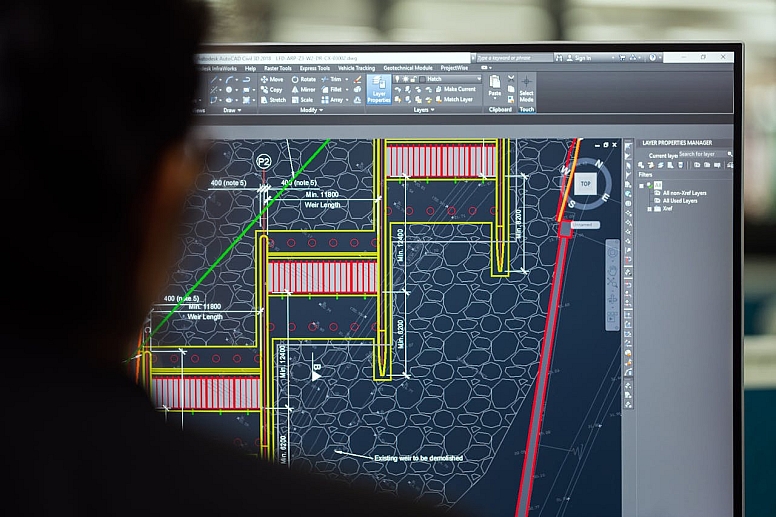
How AutoCAD Drafting Improves Design Accuracy and Efficiency
All structures are built on the principle of design, and 3D modelling is the backbone of this. These are usually design engineers and other professionals who are responsible for making sure everything is sound and stable and will not be a hazard. Certainly, one cannot make these estimations by just looking. So, this is where Autodesk’s computer-aided design comes in.
Autodesk’s Computer-Aided Design is a major component in the design and accuracy arena. It provides a highly accurate technique for creating 3D models that are detailed and stable. This software enables designers and engineers to create, modify, analyze, and optimize a design, and as a result, improve the overall stability and quality of the design and accuracy process.
How does AutoCAD help in design and accuracy?
There are numerous benefits of using AutoCAD drafting, such as improving the process of drafting and design and getting a highly accurate idea of what the final product will look like.
Prototyping and Design
One of the main uses of AutoCAD in drafting for design and accuracy is prototyping. AutoCAD enables the creation of highly accurate 3D models of structures and products, which can be changed and viewed from different angles and modified as needed. This makes vivid visualizations of the final product possible before it is manufactured.

Quality Control
AutoCAD also comes in handy during the production phase of design and accuracy. The designs modelled with AutoCAD can be used to visualize and draft quite literally any product and make sure it's highly functional. This ensures that the final product is manufactured to the exact details and specifications.
Cost Savings
One of the main advantages of using AutoCAD is the amount of money it saves. The use of AutoCAD immensely reduces the total time and energy needed to model, draft, and modify new designs. This leads to significant overall savings. In addition, AutoCAD does away with the need for physical drafts. This is because you can always use virtual prototypes for testing using AutoCAD software.
Better Communication
Another advantage of AutoCAD in drafting design and accuracy is that it improves communication. The 3D structures created with AutoCAD are easy to share and access remotely. This makes it much easier for people involved in the working process to keep track of new updates on the design and to collaborate seamlessly.
This brings us closer to some of the benefits of using AutoCAD, such as enhancing drafting design, and accuracy. It is clear that there are several practical applications and safety measures that AutoCAD enables manufacturers to ensure, from checking the soundness and 3D cross-section of a structure to the design and accuracy of production equipment.
FAQs: AutoCAD in Design and Accuracy

1. What is AutoCAD, and how does it relate to design and accuracy?
AutoCAD, developed by Autodesk, is computer-aided design (CAD) software that allows professionals to create, modify, analyze, and optimize designs. It is a vital tool for ensuring that designs are stable, accurate, and meet required specifications.
2. How does AutoCAD improve the design and drafting process?
AutoCAD provides highly accurate 3D models that help visualize the final product before manufacturing. It also allows for easy modifications and ensures that designs meet exact specifications, reducing errors in the drafting process.
3. What role does AutoCAD play in prototyping?
AutoCAD enables the creation of precise 3D models that can be viewed from various angles and adjusted as needed. This allows for vivid visualizations and testing of prototypes without the need for physical models, streamlining the design process.
4. Can AutoCAD enhance quality control during production?
Yes, AutoCAD helps maintain quality control by ensuring that designs are functional and meet all specifications. The software supports the visualization and drafting of detailed models, minimizing the risks of errors in the final product.
5. How does AutoCAD contribute to cost savings?
AutoCAD saves money by reducing the time and resources required for drafting, prototyping, and modifying designs. The use of virtual prototypes eliminates the need for costly physical drafts and testing.
6. Does AutoCAD improve communication among team members?
Yes, AutoCAD improves communication by enabling the easy sharing of 3D models and designs. This ensures all stakeholders have access to the latest updates and can collaborate effectively, even remotely.
7. What are the key benefits of using AutoCAD?
- Enhances drafting accuracy and design quality.
- Simplifies prototyping with detailed 3D models.
- Ensures effective quality control in production.
- Saves time and costs through virtual testing.
- Facilitates better communication and collaboration.
8. Who typically uses AutoCAD?
Design engineers, architects, and other professionals in the fields of construction, manufacturing, and engineering commonly use AutoCAD to ensure their designs are safe, stable, and accurate.
9. Is AutoCAD suitable for both large-scale structures and small products?
Yes, AutoCAD is versatile and can be used for designing everything from massive structures to small, intricate products, ensuring accuracy and functionality at any scale.
10. What safety measures does AutoCAD help ensure?
AutoCAD enables thorough checks of the structural soundness and design specifications of a project. It supports cross-sectional analysis and other assessments to prevent potential hazards in the final product.










